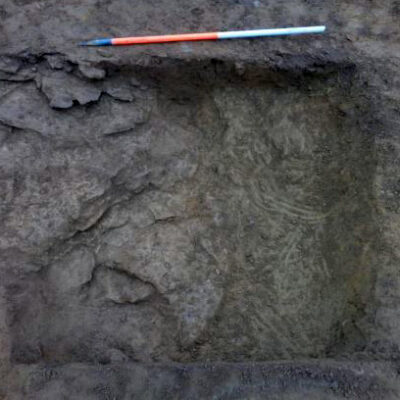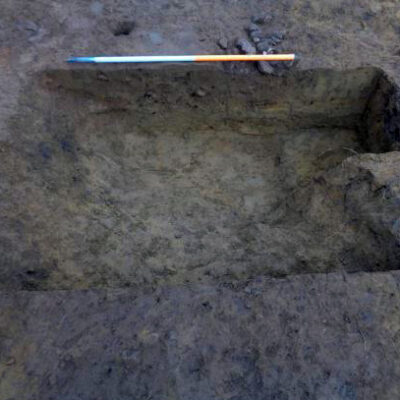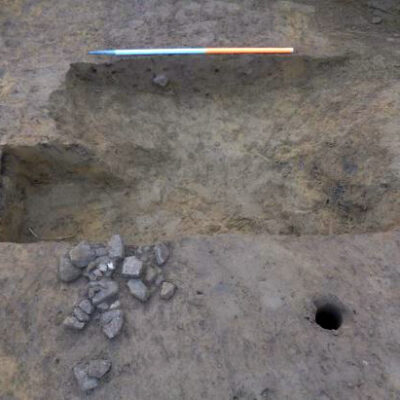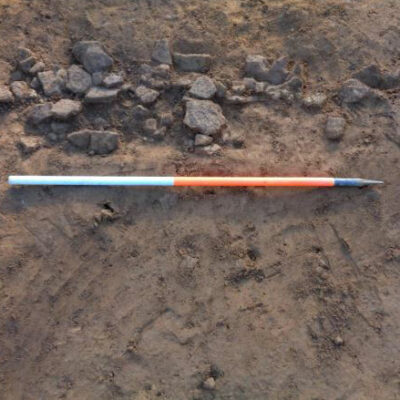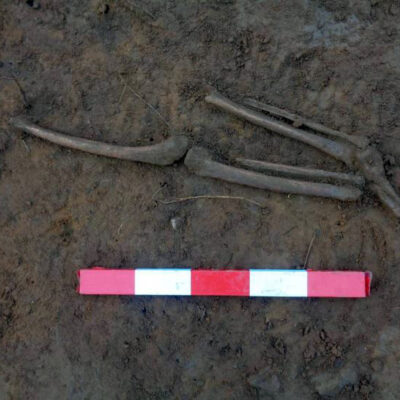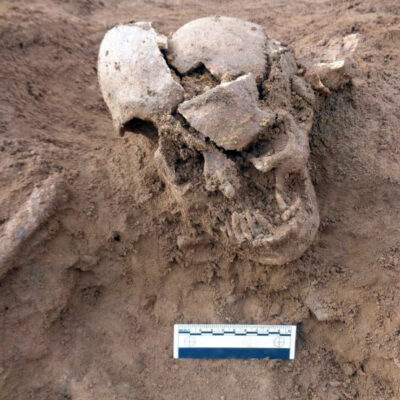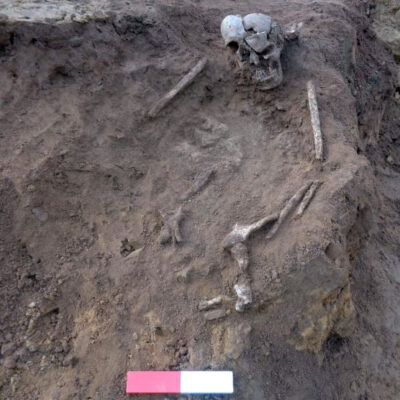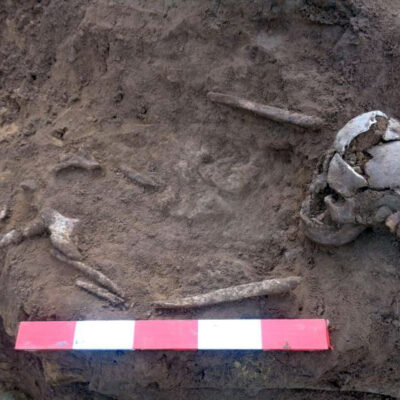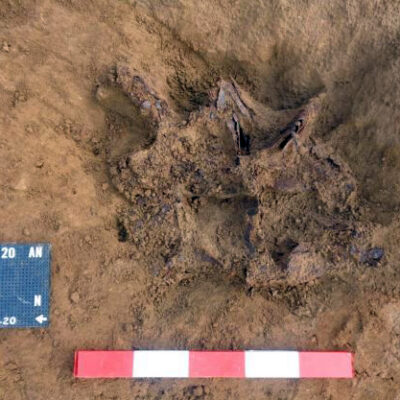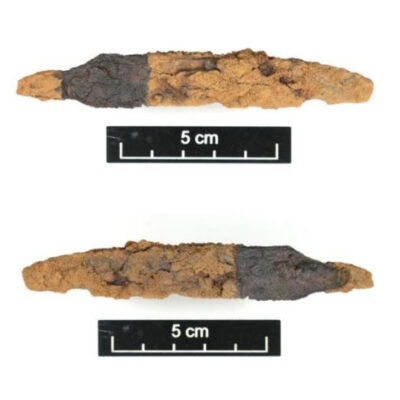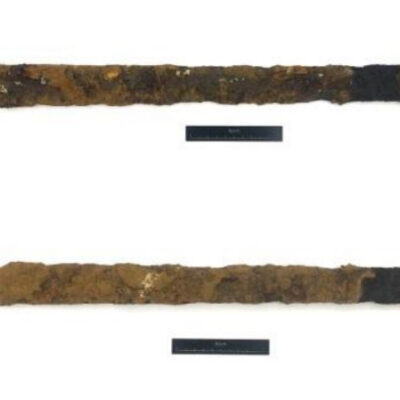Archaeological Observation, Northamptonshire
The western portion of the site revealed the skeletal remains of least nine individuals, representing part of an Anglo-Saxon cemetery. Seven of these interments survived in the form of articulated human remains aligned roughly east to west (head to west as per Christian tradition), with a further two represented only by disarticulated bone.
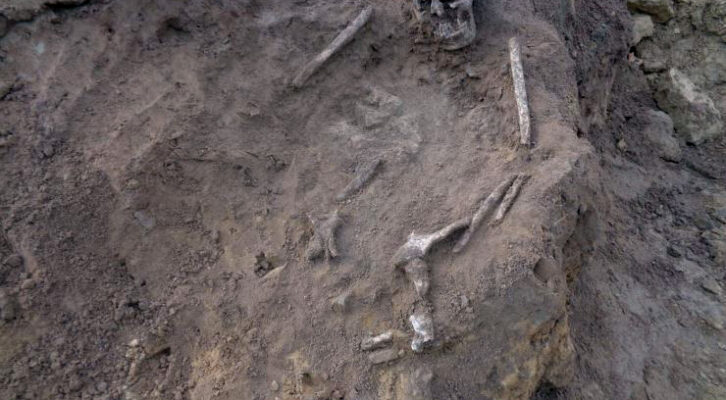
In Brief
Key Points
- Evidence of funerary landscape
- Skeletal remains of at least nine individuals
- Seven internments in the form of articulated remains aligned roughly east to west
- Grave goods included iron whittle tang knife blades and pottery
Summary
Several prehistoric flints recovered from the topsoil with one found in a ditch of otherwise unknown date offer limited evidence of much earlier activity during the Late Neolithic or Early Bronze Age period which receives some support from a reported Bronze Age inhumation in the park.
No direct evidence of a settlement was found but the faunal and archaeobotanical assemblages certainly point in that direction, with evidence of butchery waste and cereal processing recovered.
Typical of Anglo-Saxon cemeteries, the burial ground was situated on a high point at the edge of hundredal boundary affording clear views of the surrounding countryside, particularly to the S, and potentially acting to deter travellers. The dead had been buried on a broadly E/W axis, with the head to the W, consistent with Christian tradition of interring the dead in preparation for the resurrection of the body facing E; however, while the E/W orientation may indicate the persons buried were Christians, there is an increasing body of evidence from other Early Saxon burials sites to suggest that the orientation of the burials may not necessarily reflect a Christian religious affiliation but may have been influenced by other topographical factors as noted above, including the presence of a nearby, earlier funerary site or barrow. On this basis, the possibility that the inhumations could actually be pagan, rather than Christian, in affiliation cannot be altogether discounted.
Results
The archaeological observation revealed an area of significant archaeology, with seven inhumations of Early-Middle Saxon date in the form of articulated human and a further two individuals represented only by disarticulated bone.
Several prehistoric flints recovered from the topsoil with one found in a ditch of otherwise unknown date offer limited evidence of much earlier activity during the Late Neolithic or Early Bronze Age period which receives some support from a reported Bronze Age inhumation in the park.
No direct evidence of a settlement was found but the faunal and archaeobotanical assemblages certainly point in that direction, with evidence of butchery waste and cereal processing recovered.
Typical of Anglo-Saxon cemeteries, the burial ground was situated on a high point at the edge of hundredal boundary affording clear views of the surrounding countryside, particularly to the S, and potentially acting to deter travellers. The dead had been buried on a broadly E/W axis, with the head to the W, consistent with Christian tradition of interring the dead in preparation for the resurrection of the body facing E; however, while the E/W orientation may indicate the persons buried were Christians, there is an increasing body of evidence from other Early Saxon burials sites to suggest that the orientation of the burials may not necessarily reflect a Christian religious affiliation but may have been influenced by other topographical factors as noted above, including the presence of a nearby, earlier funerary site or barrow. On this basis, the possibility that the inhumations could actually be pagan, rather than Christian, in affiliation cannot be altogether discounted.

